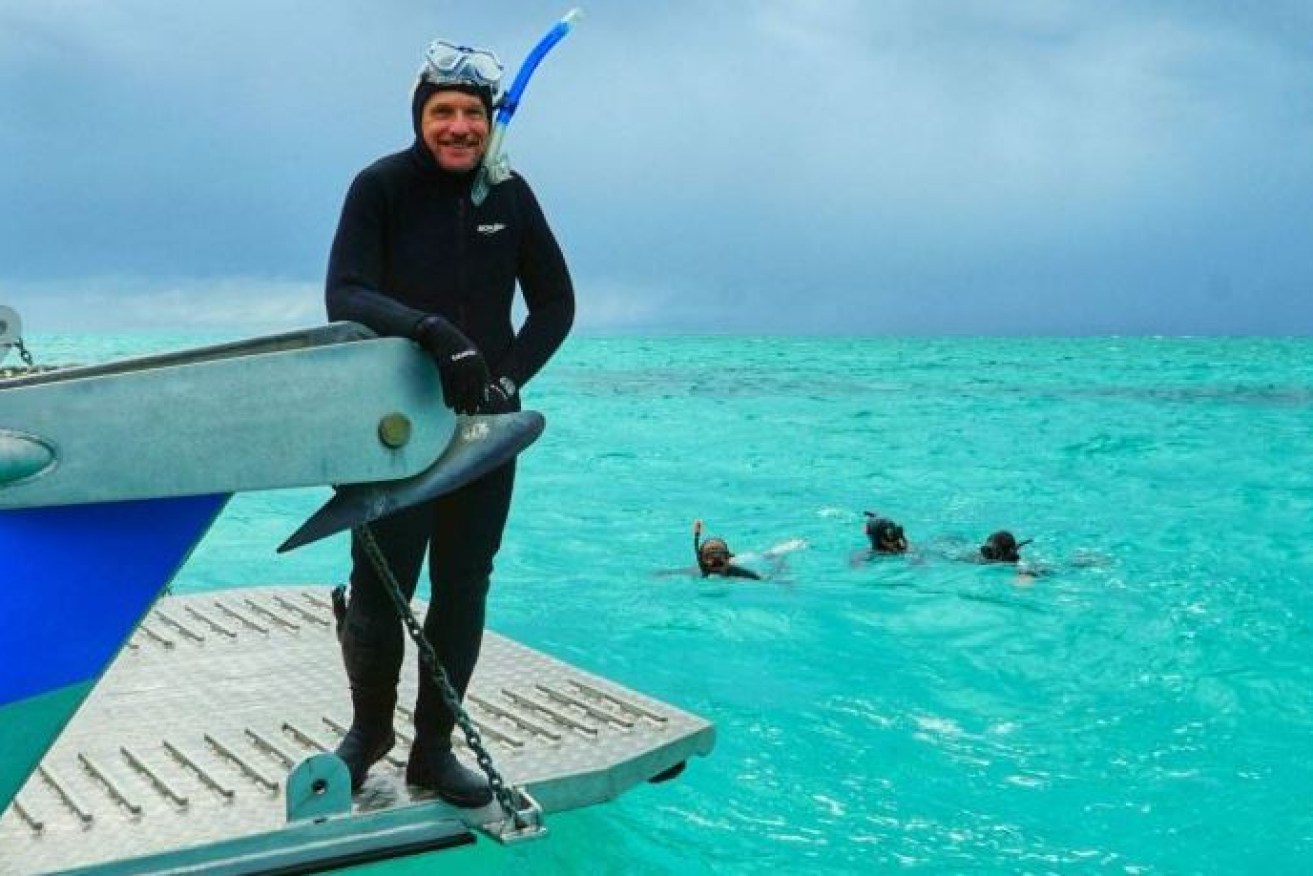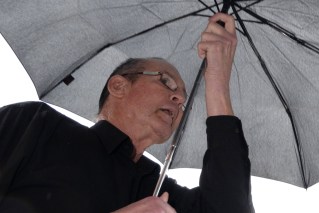Marine scientists hail coral-breeding project as ‘a great step forward’ to save Great Barrier Reef

Professor Peter Harrison discovered how coral reproduces, knowledge now reviving dead and dying Reef ecosystems. Photo: ABC
Scientists are regrowing coral from larvae on damaged patches of the Great Barrier Reef in a project that could change the management of reef systems worldwide.
Professor Peter Harrison from Southern Cross University has been collecting coral spawn off Heron Island on the Great Barrier Reef, and maturing it in tanks.
“It’s really exciting, this essentially is the rebirth of the reef,” Professor Harrison said.
A team of scientists has deposited millions of coral larvae back onto damaged areas that may not regenerate naturally.
They created large enclosures around the coral using mesh curtains and special tiles to monitor growth.
Days later, photographs reveal coral polyps had survived, and were settling into their new home.

Not much to see now, but this baby brain coral and the experiment that produced it could be the salvation of the ailing Great Barrier Reef. Photo: Supplied/ABC
It is the first time this technique has been used in Australia, and it follows a successful trial in the Philippines that transformed reefs devastated by blast fishing.
“We can grow these corals from microscopic larvae to dinner-plate size, breeding corals in just three years,” Professor Harrison said.
“It’s a new way of looking at the problem and it’s probably the only hope for the future in terms of larger scale restoration using hundreds of millions of coral larvae.”
‘The reef is battered and bruised’
Chief scientist at the Great Barrier Reef Marine Park Authority (GBRMPA), Dr David Wachenfeld, said the size of the coral was important.
“It’s not just about having any coral. It’s about getting coral big enough to reproduce,” he said.
The mesh curtains cover a hundred square metres of damaged coral, and the next challenge will be covering several kilometres.
“Then we’ve really cracked this problem, because we’ve kickstarted the natural recovery process of the reef,” Dr Wachenfeld said.
This project is not designed to restore the vast network of more than 3000 reefs over 344,000 square kilometres.

British tourists on a reef walk at Heron Island. Photo: ABC
But it has huge potential for smaller, “feeder reefs” that supply coral to other areas and support the broader marine ecosystem.
“I think that this could be something that changes management of reefs worldwide. All of the reefs, everywhere in the world, are suffering at the moment,” Dr Wachenfeld said.
“In the past, the Marine Park Authority has had a philosophy of basically getting out of nature’s way.
“But climate change is really changing that. The reef is battered and bruised. It’s more impacted than it’s ever been before.”
Professor Harrison was part of the team that discovered the mass coral spawning on the Great Barrier Reef in the early 1980s.
“I don’t know of any reef system on the planet that is now healthier than it was 35 years ago, and that’s really sad,” he said.
“In South-East Asia, which is the centre of marine biodiversity on the planet, it’s estimated that 95 per cent of those reefs are highly degraded and are facing serious threats in the coming decades.”
Great Barrier Reef Foundation managing director Anna Marsden says the research is an important step for the reef, but one that shouldn’t lessen the strong action needed against climate change.
Scientists call for ‘reality check’
Dr Wachenfeld said it had never been more urgent to tackle climate change.
“This is a moment for a reality check about the condition of the reef. But it’s also a call to action. This is a time for us to do more and act now to save the Great Barrier Reef,” he said.
Federal Environment Minister Josh Frydenberg announced $400,000 for Professor Harrison’s research, and said he was excited by its potential and would consider more funding if it was successful.
An additional $200,000 is being spent by the GBRMPA to identify the best sites to roll out the technology, which is also supported by the Queensland Parks and Wildlife Service (QPWS) and the Great Barrier Reef Foundation.
But Mr Harrison said another $1 to $2 million a year is needed over the next five to 10 years to expand the project on a meaningful scale.
-ABC








